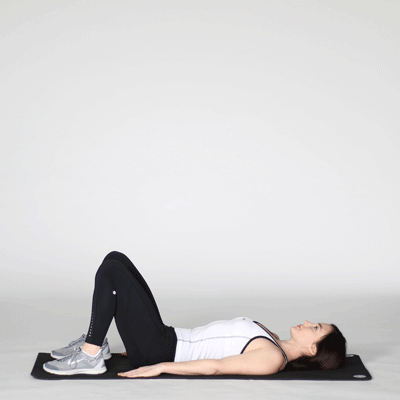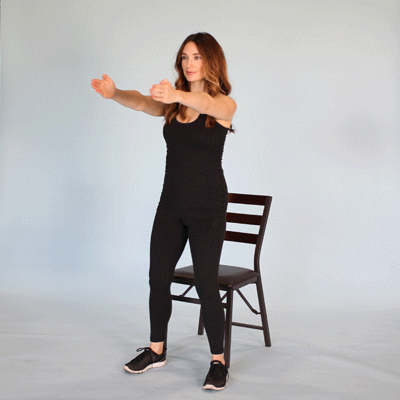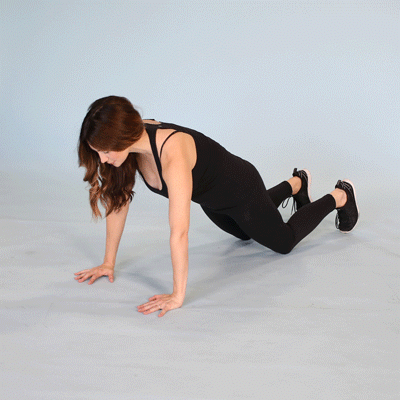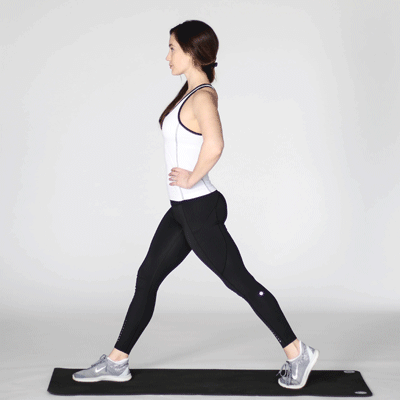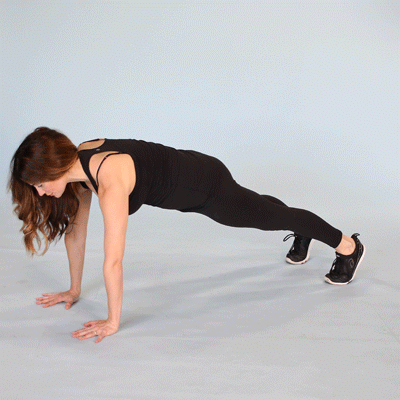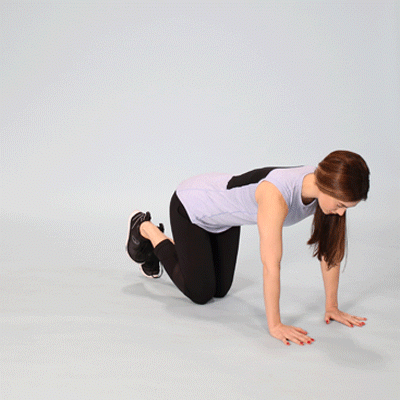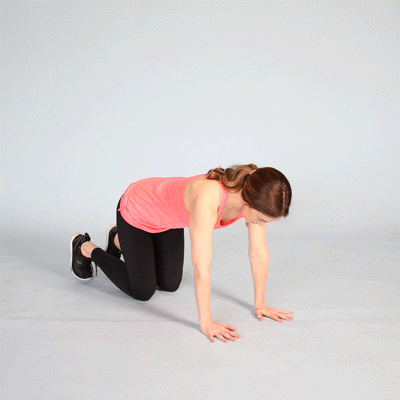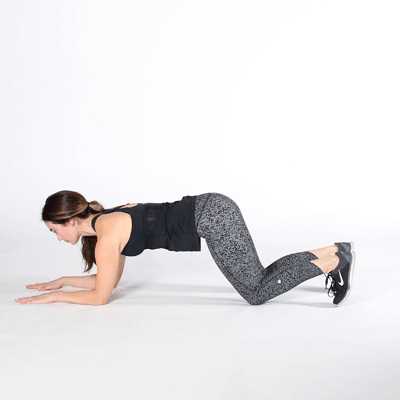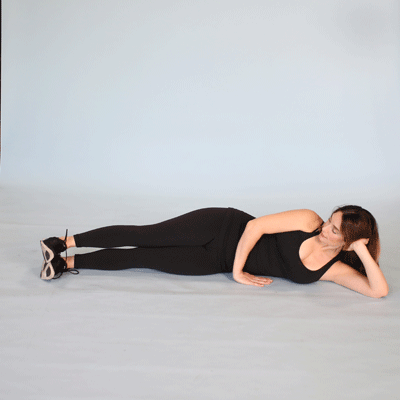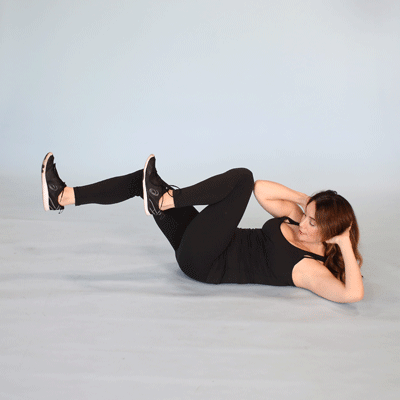We include products we think are useful for our readers. If you buy through links on this page, we may earn a small commission or other tangible benefit. Wellos and Healthline Media are owned by RVO Health. Here’s our process.
Healthline only shows you brands and products that we stand behind.
Our team thoroughly researches and evaluates the recommendations we make on our site. To establish that the product manufacturers addressed safety and efficacy standards, we:- Evaluate ingredients and composition: Do they have the potential to cause harm?
- Fact-check all health claims: Do they align with the current body of scientific evidence?
- Assess the brand: Does it operate with integrity and adhere to industry best practices?
You can exercise at home without any equipment by practicing yoga poses and strength training exercises that use your body weight for resistance.

If the idea of a home workout makes you yawn, think again!
When executed correctly, using just your body weight can give you a run for your money.
So, whether the gym isn’t your thing or you’re short on time, clear out a space in any room and prepare to sweat.
The 30 bodyweight moves we’ve detailed below can be scaled for beginner, intermediate, and advanced exercisers, so start where you feel ready and progress from there.
Our 10 picks for beginner bodyweight exercises will provide a full-body workout.
Complete 2 sets of 10 to 15 reps of each exercise, with 30 seconds to 1 minute of rest between each move.
This circuit should take about 15 to 20 minutes — a great beginner routine.
Bridge
Activate your core and posterior chain (a fancy term for the backside of your body) with a bridge. This is a great exercise to use as a warmup.
Directions:
- Lie on your back with your knees bent, feet flat on the floor, and your arms extended by your sides.
- Pushing through your feet and bracing your core, raise your bottom off the ground until your hips are fully extended, squeezing your glutes at the top.
- Slowly return to the starting position and repeat.
Chair squat
Squats can help strengthen your legs and core, which could make everyday movements easier. Starting with a chair underneath will help you master proper form.
Directions:
- Stand in front of the chair with your feet shoulder-width apart, toes pointed slightly out.
- Hinging at your hips and bending your knees, lower back and down until your bottom touches the chair, allowing your arms to extend out in front of you.
- Push up through your heels and return to the starting position.
Knee pushup
A beginner-style pushup, this move will help you build strength before attempting a standard pushup.
Directions:
- Get into a high plank position from your knees.
- Maintaining a straight line from your head to your knees, bend your elbows to lower yourself down to the ground. Keep your elbows at a 45-degree angle.
- Push back up to start.
Stationary lunge
Hit your quads, hamstrings, and glutes with a stationary lunge.
Directions:
- Split your stance with your right leg in front. Your right foot should be flat on the ground, and your left foot should be up on its toes.
- Bend your knees and lunge, stopping when your right thigh is parallel to the ground.
- Push up through your right foot to return to the starting position. Repeat for the desired number of reps, then switch legs.
Plank to Downward Dog
This move will test your upper body, especially your shoulders.
Directions:
- Get into a high plank position, with your hands stacked underneath your shoulders and your feet close together.
- Keeping your core engaged and your hands and feet stationary, pike your hips up and back into the Downward Dog pose. Your body should form a triangle with the ground. Keep your neck neutral. Your gaze should be directed toward your feet.
- Hold here for a second, then return to the plank. Repeat.
Straight-leg donkey kick
Build those glutes with donkey kicks.
Directions:
- Get on all fours, with your hands aligned with your shoulders and your knees aligned with your hips.
- Keeping your back straight, push your right foot out to the imaginary wall behind you while keeping your leg straight.
- Your foot should remain flexed (toes pointing down to the floor) throughout. Take care to keep your hips square to the ground. Squeeze your buttocks at the top.
- Return to the starting position. Repeat for the desired number of reps. Repeat on the other leg.
Discover 5 donkey kick exercise variations.
Bird Dog
A full-body move that requires balance and stability, the Bird Dog pose is easily scalable to your ability level. Start with this version if you’re a beginner.
Directions:
- Get on all fours, ensuring your hands are directly underneath your shoulders and your knees are underneath your hips.
- Keeping your neck neutral, simultaneously extend your left arm and right leg, keeping your hips square to the ground. Pause here for 2 seconds.
- Return to the start position. Repeat with your right arm and left leg.
Forearm plank
A full-body exercise that requires strength and balance, planks put the core into overdrive.
Directions:
- Assume a plank position on your forearms. Your body should form a straight line from head to feet.
- Ensure your lower back and hips don’t sag.
Hold the position for 30 seconds to 1 minute. This counts as one set. Perform 2 sets.
Side-lying hip abduction
You may not think about strengthening your hip muscles until they start to bother you, but reconsider, especially if you sit all day.
Directions:
- Lie on your left side, supporting your head with the left hand and placing the right hand in front of your body.
- Keeping your legs straight, stack the right leg over the left leg, keeping your hips pointed forward.
- Lift your right leg up, maintaining your body’s position. Make sure your hips don’t open up.
- Return to the start position. Repeat for the desired number of reps, then perform on the other side.
Bicycle crunch
Although you’ll work your core with almost all of these strength exercises, a targeted ab move doesn’t hurt.
Directions:
- Lie on your back and bring your legs to a tabletop position. Bend your elbows, and put your hands behind your head.
- Crunch up and bring your right elbow to your left knee, straightening your right leg.
- Release the crunch slightly. Bend your right leg and straighten your left leg, then bring your left elbow to your right knee.
- Repeat for the desired number of reps.
If you’ve mastered the beginner routine, you’re ready to take on these intermediate moves.
Complete 2 sets of 10 to 15 reps of each exercise below, then move on to the next after 1 minute of rest.
An alternative, more advanced approach is to complete timed rounds. For instance, complete 1 minute of each exercise and repeat the circuit twice.
Compete against yourself to get just 1 or 2 more reps each time you complete the routine. However, don’t sacrifice good form for extra reps. It’s better to perform fewer reps and maintain proper form to help reduce injury risk.
Single-leg bridge
Any time you take an exercise to a single leg, you’ll automatically make it harder.
- Assume a bridge position.
- Lift one foot off the ground while keeping your leg bent, then bring the foot down.
- Repeat this movement with the other leg.
Complete the same number of reps on each side.
Squat
Taking out the chair allows you to master the form of a regular bodyweight squat.
The same motion is still applicable here, though. Imagine you’re sitting down in a chair by hinging at the hips and pushing your bottom back.
Pushup
A standard pushup is the more challenging version of a knee pushup. Assume a high plank position and complete the pushup in the same way, allowing your elbows to flare out at a 45-degree angle.
Forward and backward lunge
By traveling instead of staying stationary in a lunge, you’ll improve stability, mobility, and balance.
- Start with your feet together and step forward, lunging with your right leg.
- Push off the forward leg to come back through the starting position, and step back into a backward lunge.
- Push off the backward leg to return to the center. This is 1 rep.
This counts as one rep. Perform this 10 to 15 times on your right leg, then repeat on your left leg.
Pike pushups
Adding a pushup to your pike will target those shoulders even more. The movement here is all in the arms, so keep the rest of your body stable.
To perform, assume a pike position and bend at the elbows — allowing them to flare out to the sides — directing the top of your head toward the ground.
Kneeling squat
Kneeling squats are great for time under tension, or keeping your legs and glutes under continuous work, which adds to the burn.
Directions:
- Drop down into a squat position. You won’t stand at all during this move.
- Drop your knees down to the ground one at a time so you’re kneeling.
- Step your feet back to the ground one at a time, maintaining that squat position.
- Repeat as quickly as you can while maintaining good form.
Superman
Work your lower back — and the whole backside of your body — with a superman. Go as slowly as you can to reap the benefits of this move.
Directions:
- Lie on your stomach, arms and legs extended.
- Keeping your neck neutral, recruit your core and the back of your body to simultaneously raise your arms and legs up and off the ground as high as they’ll go.
- Pause for 1 second at the top, and slowly lower back to the start position.
Plank with alternating leg lift
Adding a leg lift to a regular plank makes you unstable, requiring your core to work in overdrive and your three limbs to support more weight.
Lift one leg up, hold it for 5 seconds, and return it to the ground. Repeat with the other leg.
Kneeling side plank with hip abduction
Holding your body up with your knee and your extended arm during a hip abduction makes this move an upper-body exercise, too. Plus, it recruits the core even more.
- Kneel on your left side, supporting your body with your elbow. Bend knees at 90 degrees with hips facing front, in line with knees.
- Lift the right (top) leg up, pause, and lower it back down.
Perform for 10 to 15 reps, then repeat on the other side.
Dead bug
Activate those deep core muscles with a dead bug.
Directions:
- Start lying on your back, legs at tabletop, and arms extended in front of you.
- In a coordinated motion, drop the heel of your left leg toward the ground and drop your right arm above your head, taking care your lower back stays flat on the ground.
- Bring your leg back to tabletop and your arm in front of you, then repeat with the opposite arm and leg.
When the intermediate routine becomes a breeze, try these advanced moves.
Perform 2 sets of 10 to 15 reps for each exercise, resting for 30 seconds to 1 minute between exercises.
Alternatively, perform 1 set of each exercise, rest for 1 to 2 minutes, and repeat.
Single leg bridge with leg extended
Lifting the foot and then extending the leg straight out will make a single-leg bridge even more difficult.
Keep your foot flexed throughout the movement. Complete the same number of reps on both legs.
Overhead squat
Extending your arms overhead will challenge your mobility and range of motion in your upper body, as well as give your lower body the benefits of a squat. It’ll also force you to engage and work your core.
To perform, complete a squat with your arms extended overhead throughout.
One-legged pushup
Lifting one leg will put more weight on your other three limbs, increasing the challenge.
To get it done, assume a pushup position and lift one leg off the ground, then complete the pushup.
Jumping lunges
Jumping exercises, often known as plyometrics, require giving max effort for a short interval of time.
Because of the power and strength they require, you’ll feel the burn quickly.
Add a jump to your lunge, really exploding up in each rep, to challenge yourself.
Elevated pike pushups
Elevating your feet in a pike pushup will make this version the hardest.
Put your feet on an elevated surface, like a bench or a step, and complete an elevated pike pushup.
The higher the surface, the more challenging it will be.
Kneeling squat with jump
Instead of stepping your feet back up from kneeling, jump them. You’ll need lots of power and strength for this move.
Advanced Bird Dog
Get into a high plank position, then complete a Bird Dog, lifting one arm and the opposite leg simultaneously.
As with all advanced exercises, maintaining a straight spine is key here.
One-leg forearm plank hold
Lifting one leg and holding it there will elevate a forearm plank.
- Assume a static plank position on your forearms.
- Raise one leg and hold for as many seconds as you can, then switch sides.
Learn more about 15 plank variations.
Side plank with hip abduction
Plank off your foot instead of your knee for a full-body challenge in this hip abduction.
To perform, assume a side plank, then perform a leg lift. Repeat on both sides.
Hollow hold to jackknife
This move requires you to contract your abs throughout.
Directions:
- Get into a hollow hold position: Lie on your back and extend your arms above your head. Engage your core, lift your legs and upper body off the floor, and hold them there.
- Add in a jackknife: Keeping your legs fully extended, raise your legs and bring your arms overhead toward your toes so that they touch.
- Slowly drop your legs and arms back down until you come back into the engaged hollow hold position.
Are 20-minute home workouts effective?
A 20-minute home workout is better than no physical activity, but only performing 20-minute home workouts may not be enough weekly exercise.
The
However, if your goal is weight loss or muscle gain, more factors like diet may play a role.
Is it effective to workout at home?
Yes, working out at home
What exercises burn belly fat?
Some cardiovascular and weightlifting exercises could help you burn belly fat. However, it’s important to note you can’t “spot reduce” fat from your belly or any other targeted section of your body. If you’re trying to lose weight, it’s important to eat a well-balanced diet and to be in a calorie deficit.
Bodyweight exercises will make your at-home workout challenging no matter your fitness level. Start with our beginner routine, and in just a matter of months, you could be well on your way to mastering the advanced routine. Earn that sweat equity today!

